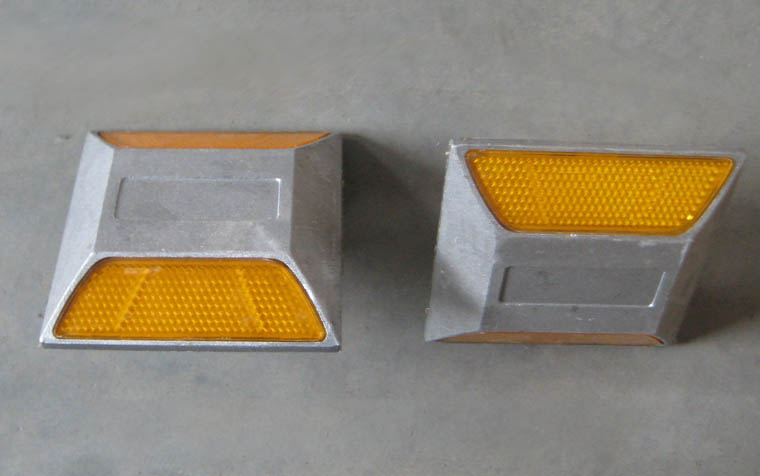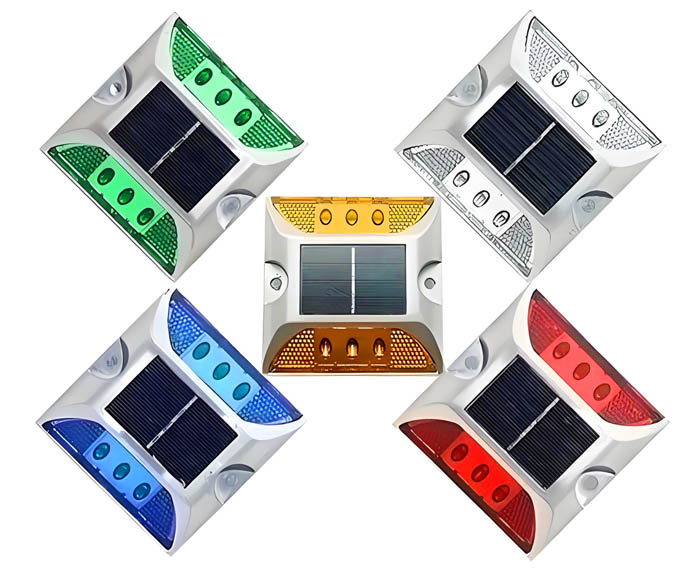Introduction to Road Studs and Their Importance in Modern Traffic Management
Road studs, particularly reflective road studs, are an essential component of modern road safety infrastructure. These small yet highly effective devices provide drivers with critical visual guidance, ensuring safer travel—especially at night, in adverse weather conditions, or in areas with insufficient lighting.

Unlike traditional road markings, reflective road studs do not fade over time but maintain their visibility by efficiently reflecting vehicle headlights, making them an indispensable part of modern roads. This article explores the key advantages, application scenarios, and technological advancements of reflective road studs, focusing on how they contribute to building safer and more efficient transportation networks.
How Reflective Road Studs Enhance Road Safety
1. Exceptional Visibility in Low-Light Environments
The most significant advantage of reflective road studs is their ability to significantly enhance visibility at night or in low-light environments. Traditional road markings are virtually invisible in the absence of adequate lighting, thereby increasing the risk of accidents.
However, reflective road studs utilize high-quality reflective materials (such as glass beads or prismatic reflectors) to directly reflect light back into the driver’s eyes. This ensures that lane boundaries, curves, and potential hazard zones remain clearly visible, thereby reducing the likelihood of collisions and enhancing overall road safety.
2. Clear Lane Demarcation to Reduce Accidents
Lane discipline is crucial for accident prevention, especially on high-speed roads like highways. Reflective road studs serve as passive guidance devices, helping drivers stay within their lanes during adverse weather conditions such as heavy rain, fog, or snow.
Studies show that roads with clear markings and reflective cat’s eyes significantly reduce lane departure accidents, which are a leading cause of fatal crashes. By providing continuous visual references, these reflective studs help maintain orderly traffic flow and reduce sudden changes in driving behavior.

3. Durability and weather resistance
High-quality reflective road studs are specially designed to withstand extreme weather conditions, including heavy rain, snow accumulation, and temperature fluctuations. Unlike painted road markings, which wear out due to friction and weather exposure, road studs made from durable materials such as aluminum, ceramic, or reinforced polymers can maintain their functionality for years.
Additionally, many modern reflective road studs feature anti-slip surfaces to prevent hydroplaning and enhance traction, further improving driving safety in wet conditions.
4. Cost-effectiveness and long-term savings
Although initial installation costs may vary, reflective road studs offer economic advantages over traditional road markings in the long term. Painted markings require frequent repainting due to fading, while road markers remain effective for extended periods with minimal maintenance costs.
Municipal departments and highway management agencies often find that investing in reflective road studs reduces repetitive maintenance expenses while maintaining consistent safety performance.
5. Convenient Installation and Minimal Traffic Disruption
Another advantage of reflective road studs is their simple installation process. They can be secured to the road surface using strong adhesive or mechanical fasteners, enabling rapid deployment without the need for prolonged road closures.
This efficiency makes them an ideal choice for urban roads, highways, and temporary construction zones, particularly in scenarios where minimizing traffic disruption is a priority.
6. Flexibility for Various Road Scenarios
The application scope of reflective road studs is not limited to highways; their functionality covers various road types:
- Highways and expressways: Used for lane separation, curve warnings, and exit markings.
- Urban roads: Enhancing safety at crosswalks, roundabouts, and bike lanes.
- Rural and low-light areas: Improving visibility on poorly lit rural roads.
- Airports and ports: Guiding aircraft and vehicles under low-visibility conditions.
Some advanced models also integrate solar-powered LEDs, providing additional brightness, making them an ideal choice for high-risk areas such as sharp curves and tunnels.
Technological advancements in reflective road studs
Solar-powered and smart road studs
Recent innovations have introduced solar road studs that absorb sunlight during the day and emit bright LED light at night. These signs are particularly suitable for areas without streetlights, providing continuous visibility without relying on external power sources.
Additionally, smart road studs with built-in sensors can communicate with connected vehicles (V2X technology) to provide real-time traffic data and hazard warnings, enhancing autonomous driving safety.

Environmental Sustainability and Sustainable Design
As sustainability becomes a priority, manufacturers are developing road studs using recycled materials and energy-efficient components. Solar-powered reflective designs and low-maintenance features further reduce environmental impact while maintaining high-performance standards.
Why Reflective Road Studs Are Essential for Modern Roads
Reflective road sutds play a critical role in modern traffic management by enhancing visibility, reducing accident rates, and ensuring smooth traffic flow. Their durability, cost-effectiveness, and adaptability make them the preferred solution for improving road safety worldwide.
With advancements in technology, innovative solutions such as solar road sutds and smart traffic integration will further revolutionize road safety. Governments, urban planners, and traffic management authorities must continue to prioritize these solutions to build safer and more efficient road networks.
By investing in high-quality reflective road sutds, cities can significantly reduce nighttime accidents, boost driver confidence, and create more sustainable transportation infrastructure for future generations.

